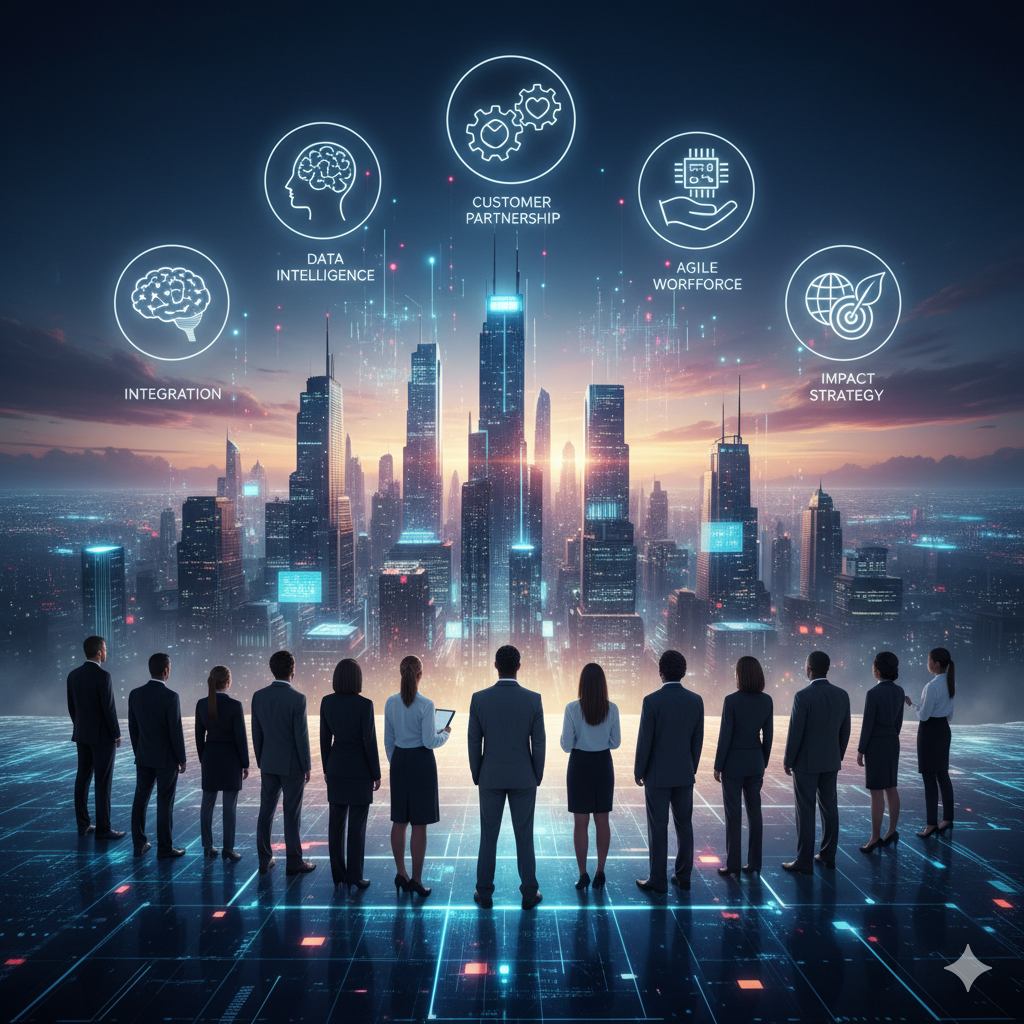Beyond the Horizon: 5 Critical Shifts Your Business Must Make to Thrive in 2026
Critical Shifts
As we head into the final quarter of 2025, the temptation is to focus solely on finishing the year strong. While that’s important, the leaders who truly get ahead are the ones already positioning their organizations for the challenges and opportunities of tomorrow. The landscape of business is shifting under our feet, driven by rapid technological advancements, evolving customer expectations, and a new generation of workforce values.
Simply put, the strategies that brought you success this year won't be enough to guarantee it in 2026.
Is your organization prepared to adapt, or will it be left reacting? Here are five critical shifts your business needs to start making right now to build a competitive edge for the year ahead.
1. Shift from Data Collection to Data Intelligence
For years, we’ve been told to collect data. Now, most businesses are sitting on a mountain of it with no idea how to use it effectively. The shift for 2026 is moving beyond simple collection to embedding data intelligence into every decision.
What it means: Leveraging AI-powered analytics to uncover predictive insights, identify hidden market trends, and understand customer behavior on a granular level.
Action Step: Invest in user-friendly business intelligence (BI) tools and, more importantly, train your teams to ask the right questions of your data. Start a pilot project in one department (like marketing or sales) to demonstrate the ROI of data-driven decision-making.
2. Evolve from Customer Service to Customer Partnership
Your customers no longer want to be just a transaction. They expect personalized experiences and a relationship built on trust and mutual value. The new standard is moving from a reactive "service" model to a proactive "partnership" model.
What it means: Using CRM data and customer feedback to anticipate needs before they arise. It’s about co-creating solutions with your clients and making them feel like valued insiders.
Action Step: Map out your customer journey and identify key touchpoints where you can add proactive value. Can you send a client a relevant industry report? Can you offer a customized solution before they even realize they need one?
3. Transition from Rigid Hierarchies to an Agile Workforce
The top-down, rigid organizational structures of the past are too slow for today's dynamic market. To stay competitive, businesses must embrace agility, empowering teams to be more flexible, collaborative, and responsive.
What it means: Building cross-functional teams that are empowered to own projects from start to finish. It means fostering a culture of experimentation where calculated risks are encouraged and "failure" is seen as a learning opportunity.
Action Step: Identify one key project that could benefit from an agile approach. Create a small, empowered team with members from different departments and give them the autonomy to deliver results without the usual red tape.
4. Move from Optional Tech to Mandatory AI Integration
Artificial intelligence is no longer a futuristic buzzword—it's a fundamental business tool. Companies that view AI as an optional add-on will be outpaced by competitors who integrate it into the core of their operations.
What it means: Looking beyond chatbots and simple automation. It’s about using AI to optimize supply chains, enhance product development, personalize marketing at scale, and free up your human talent for high-value strategic work.
Action Step: Conduct an AI-readiness audit. Identify 2-3 key processes within your business that are repetitive, data-heavy, or inefficient and research AI tools that are specifically designed to solve those problems.
5. Shift from Vague Goals to a Clear Impact Strategy
Today’s employees and customers are drawn to businesses that stand for more than just profit. A clear purpose and a demonstrable commitment to social and environmental responsibility are becoming powerful differentiators.
What it means: Defining and measuring your organization's positive impact. This goes beyond a mission statement on a wall; it’s about integrating sustainability and ethical practices into your business strategy, supply chain, and brand story.
Action Step: Choose one area where your business can make a tangible impact—whether it’s reducing your carbon footprint, launching a community partnership, or improving workforce diversity. Set a measurable goal for 2026 and share your progress publicly.
Are You Ready for What's Next?
The future doesn’t wait for you to be ready. Preparing for 2026 starts now, with intentional, strategic decisions that build a more resilient, intelligent, and impactful organization.
Navigating these shifts can be complex, but you don’t have to do it alone. If you’re ready to turn these insights into a concrete action plan for your business, let’s talk.


